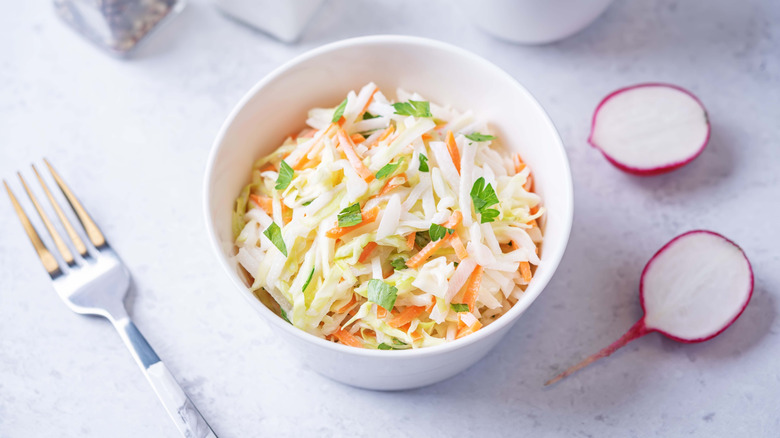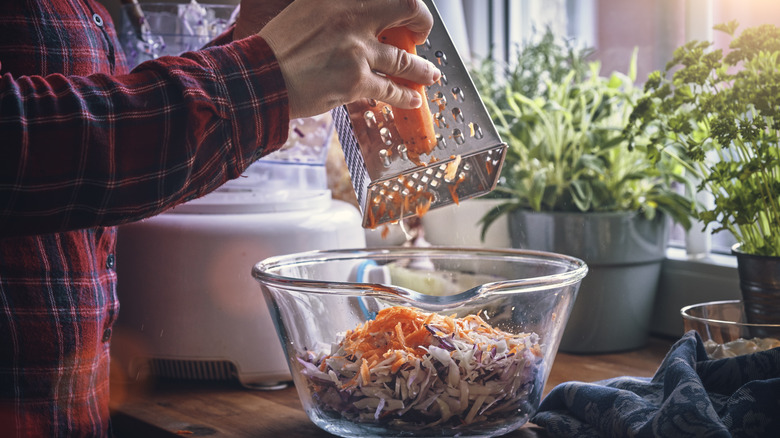What Makes Restaurant Coleslaw Taste So Good?
Coleslaw is the unsung hero of the food world. A humble yet delicious preparation featuring cabbage, mayonnaise, vinegar, and assorted seasonings, this side dish is always a welcomed sight when it appears alongside some savory barbecue or hot dogs and burgers at a cookout. While homemade food is often preferred, coleslaw seems to taste the best when served at a restaurant. To get to the bottom of this culinary conundrum, Mashed spoke with Bob Bennett, head chef at Zingerman's Roadhouse, in an exclusive chat.
According to Bennett, there are three distinct reasons why coleslaw typically tastes better at restaurants. The chef attributes restaurant-quality taste and texture to freshness, consistency of cut cabbage ("which helps the flavor get in all the crevices"), and creative flavors." Fresh vegetables naturally offer the best flavors and optimal crispness, and cutting uniform pieces of cabbage ensures even dressing distribution while also developing a nice texture. As for chef Bennett's note about creative flavors, restaurants often experiment with their slaw recipes by incorporating new ingredients and seasonings. Keep in mind that there's a multitude of coleslaw recipe variations from around the world, including Filipino atchara and Mexican ensalada de col. That means professional chefs have lots of inspiration to explore.
How to make restaurant-quality coleslaw in your own kitchen
Bob Bennett says that it's possible to make a traditional coleslaw recipe at home that's just as good as what you'd find at a restaurant. The key is to avoid a common error that plagues even the most accomplished home chefs. "I think it is really about the timing," states Bennett. "When coleslaw gets mixed too early the cabbage will release too much water and become a little too soft," he explains. You want coleslaw to have a bit of crunch to it, and controlling moisture is vital. The chef recommends waiting to mix the slaw until you're just about ready to serve to ensure a pleasing texture.
Bennett also emphasizes the importance of experimentation. The chef advises, "Have fun. Not all coleslaws need to be the white mayo-based slaws." For instance, our easy spicy coleslaw recipe ditches the mayonnaise for Dijon mustard and tahini, a buttery condiment consisting of sesame seeds, oil, and salt. Bennett also mentions fruit-based slaws, which can feature unexpected ingredients like apples, peaches, pineapples, and marshmallows along with traditional components like cabbage and celery. Wherever your coleslaw journey takes you, Bennett's tips can help you achieve restaurant quality in your home kitchen.

